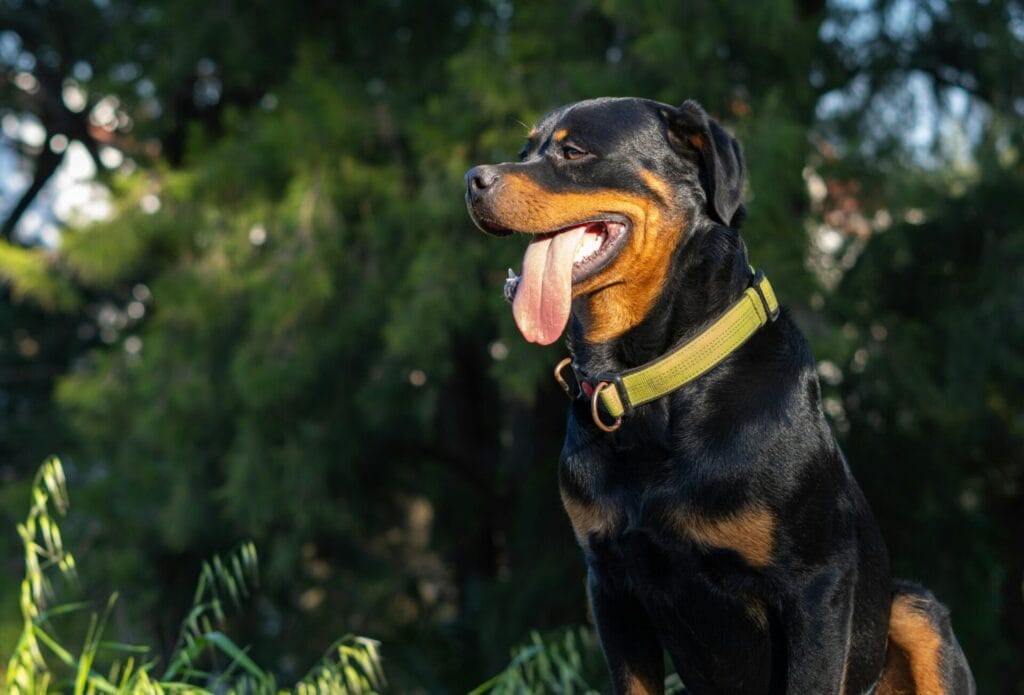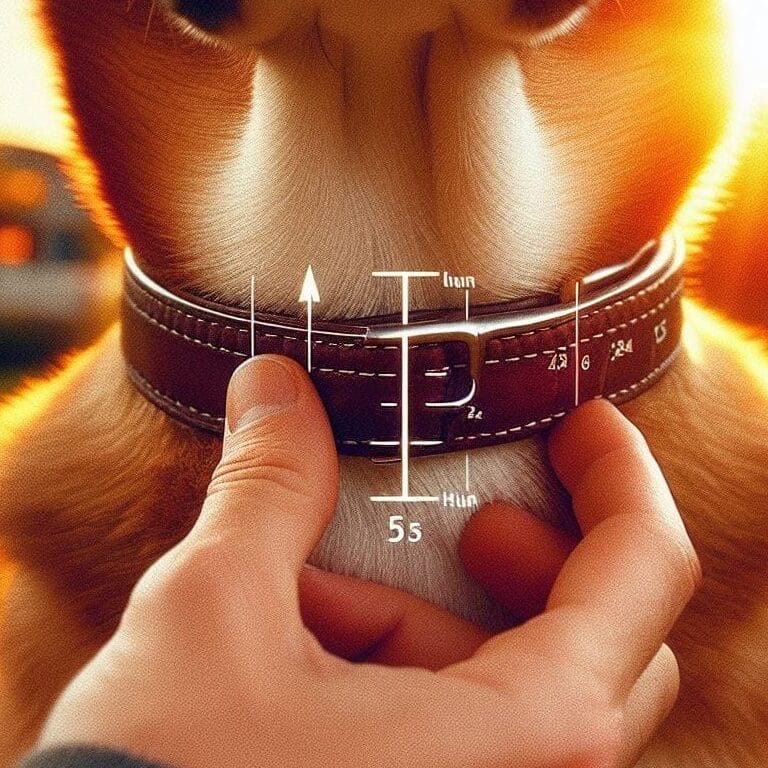As passionate dog lovers and experienced pet owners, we understand the significance of ensuring your furry friend’s collar fits just right. Learn how loose should a dog collar be to keep your furry friend comfy and safe. Get tips on finding the right fit and adjusting as needed. Discover signs of discomfort and when to make changes. How loose should a dog collar be? Find out for a happy pup!
We will jump into this ocean step by step.First of all you need to know these things.
What Is a Dog Collar?

A dog collar is like a necklace for dogs. It’s not just for looks; it’s really helpful! Collars hold tags with your dog’s name and your contact info, and they’re great for walks and training. Some collars even have special features like GPS trackers or reflective strips for safety. Basically, collars help keep your dog safe and make it easier to take care of them.we also say that dog collars are essential tools for identification, control, and training.You can also make a dog collar at home.Want to learn more ? Click here
Types of Dog Collars:

There are different kinds of dog collars for different needs:
- Flat Collars: These are the most common. They’re adjustable and come in different materials like nylon or leather.
- Martingale Collars or Safety Collars: These are designed to stop dogs from slipping out. They have a special loop that tightens gently when the dog pulls.
- Choke Chains or Training Collars: These collars are for teaching dogs how to behave. Choke chains and prong collars are examples, but they should be used carefully.
- Prong Collars: Prong collars, also called pinch collars, have metal prongs that exert pressure on the dog’s neck when pulled. Like choke chains, they are primarily used for training purposes and should be used under the supervision of an experienced trainer.
- Harnesses: These aren’t exactly collars, but they’re another option. They wrap around the body and are good for dogs who pull a lot or have neck problems.
Choose the collar wisely
Dog Collar Sizes:

Dog collars come in different sizes to fit different dogs. Whether your pup is small like a Chihuahua or big like a Great Dane, there’s a collar size for them. To make sure the collar fits well, you need to measure your dog’s neck carefully. This ensures they’re comfy and safe when wearing their collar. Remember to check the fit regularly, especially if your dog is growing or changing weight. Keeping the collar snug but not too tight is important for your dog’s comfort and safety.
- Small Collars: These are for little dogs like Chihuahuas or Pomeranians. They have smaller necks, so they need smaller collars to fit comfortably.
- Medium Collars: These are for dogs like Beagles or Cocker Spaniels. They’re a bit bigger than small dogs but not as big as large breeds, so they need medium-sized collars.
- Large Collars: These are for big dogs like Labrador Retrievers or German Shepherds. They have larger necks, so they need bigger collars to fit properly.
When you’re buying a collar for your dog, make sure to check the size chart to find the right one for their neck size. A collar that’s too tight can be uncomfortable, but one that’s too loose might slip off. So, it’s important to get the size right for your dog’s comfort and safety.
Measuring Your Dog’s Neck

Before selecting a collar, it’s imperative to measure your dog’s neck accurately. Use a soft measuring tape to determine the circumference of your pet’s neck, ensuring a snug but not constricting fit. Take the measurement at the base of the neck, where it meets the shoulders. Then, add a few inches for comfort. If you already have a collar that fits well, you can use that as a guide too. Checking their size regularly is a good idea, especially if they’re still growing.
how loose should a dog collar be ?

A collar should fit snugly but not too tight. You should be able to fit two fingers between the collar and your dog’s neck comfortably. This ensures they can breathe properly and don’t feel uncomfortable. Checking the fit regularly is important, especially if your dog’s weight changes.
Two-Finger Rule:
The “two-finger rule” is a guideline used to determine the proper fit of a dog collar. According to this rule, when the collar is fastened around the dog’s neck, you should be able to comfortably slide two fingers between the collar and the dog’s neck. This ensures that the collar is snug enough to stay in place securely but not so tight as to cause discomfort or restrict the dog’s breathing. Following the two-finger rule helps ensure that the collar fits properly and keeps the dog safe and comfortable.There is a brief and detailed guide on how tight should a dog collar be ?
How to Know if Your Dog’s Collar Is Too Tight or Too Loose:
Watch your dog for signs of discomfort. Scratching at the collar, trouble breathing, or irritated skin could mean it’s too tight. If the collar slips around a lot or your dog can get their jaw stuck, it might be too loose. Keep an eye on them and adjust the collar as needed.
Should a Dog Wear a Collar All Day?
It’s okay for dogs to wear collars during the day, but it’s a good idea to take them off sometimes too. For example, when they’re playing on their own or sleeping, it’s safer without a collar. Some dogs find collars uncomfortable if they wear them too long, so it’s good to give them breaks. Just keep an eye on them to make sure they’re safe and comfy.
conclusion

In conclusion, the proper fit of a dog collar is paramount to your pet’s comfort, safety, and well-being. By following the guidelines outlined in this article, you can ensure that your furry friend’s collar fits just right, allowing them to enjoy walks, playtime, and everyday activities without discomfort or risk of injury. Remember to regularly check the fit of your dog’s collar and make adjustments as needed to ensure a snug and secure fit.you will also find some information on the American kennel Club
FAQS:
Should dogs sleep with collar off?
Many experts recommend removing your dog’s collar when they sleep to prevent any potential hazards or discomfort. However, it ultimately depends on your preference and your dog’s comfort.
Do dogs find collars uncomfortable?
Some dogs may find wearing collars uncomfortable initially, especially if they’re not used to it. However, most dogs quickly adjust to wearing collars, especially if they associate them with going for walks or other enjoyable activities.
Do pets hate collars?
While some pets may initially dislike wearing collars, many become accustomed to them over time. Proper introduction, positive reinforcement, and ensuring a comfortable fit can help alleviate any discomfort or dislike your pet may have towards collars.
What collars do vets recommend?
Vets may recommend different types of collars depending on the individual needs of the dog. Generally, flat collars or harnesses are suitable for most dogs, but for training purposes, vets may recommend using head collars or front-clip harnesses. It’s essential to consult with your vet to determine the best collar for your dog’s specific needs and temperament.



